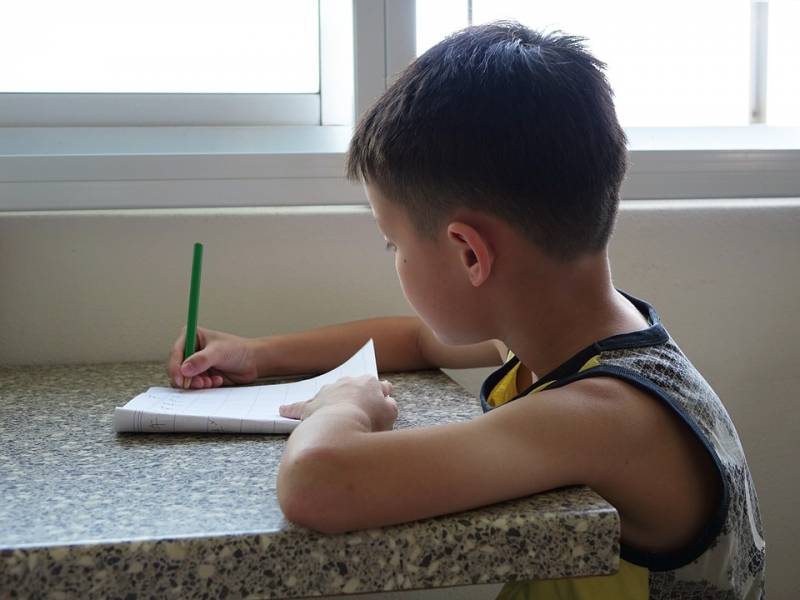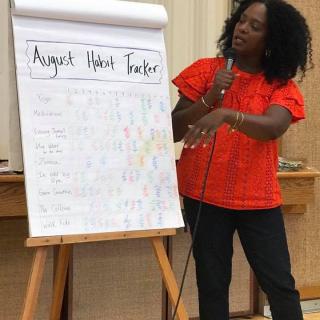
There are plenty of reasons children may struggle with their homework, and it's important that we help find solutions. Education and parenting experts chimed in on one helpful tip: finding the best location for your child to focus.
Eliminate distractions

JoAnn Crohn, CEO of Whimsicle said:
Have a distraction-free homework area. In our house, it is our kitchen table. I find that it is central enough for me to help my second-grade daughter when she needs it and yet close enough to toys and entertainment for my two-year-old son. The most difficult part is keeping this area distraction-free. We can’t turn on the TV, play with anything interesting, or do anything fun. That’s life with a six-year-old. Instead, I pull out paper and crayons for my two-year-old son so can “do homework” too. The next tip changed our after-school bad moods immediately!

Maria Cardenas, Head of School for Fusion Miami, said:
We recommend parents to try to create a relaxing space where the child can nurture his/her creativity. It is essential for a student to have a homework area that’s free of distractions and has all the materials they’ll need to get the work done. This will result in increased academic interest, helping the child unlock his/her academic potential.
Have supplies at the ready
Dr. Emily Levy of EBL Coaching said:
Help your child to create a clean, well-organized study area where she completes her homework on a regular basis. This could be a desk in her bedroom, the kitchen table, a study desk in another room, or the like. This study area should be stocked with all the supplies she may need to complete her work -– pens, pencils, loose leaf paper, highlighters, a sharpener, and so on. Help her organize the supplies into labeled containers or sections within drawers so that every item has a home. As the supplies quantities dwindle, be sure to refill them right away to avoid any unnecessary distractions in trying to look for these items.

Dr. Fran Walfish, author of The Self-Aware Parent, said:
Provide a distinct, comfortable, well-lit, quiet, and non-distracting place for the homework to be completed. Ensure that your child has everything needed to do homework, from pens and paper to a laptop and books, and be sure to get special project materials in advance, to avoid the excuse of "I don't have what I need."
Get creative to get them comfortable

Kanesha Baynard of Bold Living Today said:
Set up an inviting homework space/station in your home. It doesn't have to be permanent station if your home is small. Be creative and have a table/desk, cushion/beanbag, and all homework supplies available.

Erica M. Wollerman, PsyD and founder of Thrive Therapy Studio, said:
If it is hard for your child to get to work at home, consider having them complete work at a tutoring center where they complete their work and then either have fun or get to go home to have fun. Another idea is to bring them to a coffee shop to get a treat and do their work on the way home. This way they might not show all of their avoidant behavior because they are in public and on the way home.

Nancy K Gretzinger, EdD of Healthy ON said:
[Have a] comfortable chair (no dangling feet -- put some type of support so feet have something to rest on), also a desk/table at a proper height. If your child is a wiggler, buy a beach ball, slightly inflated, and place on the chair -- allows for movement. If they would prefer to stand, let them. Provide a squeeze ball for opposite non-writing hand if it wouldn’t be a distractor. Many teachers provide a folder - one side papers stay home, other side paper's returned. If the teacher did not do this, the parent should. The "inbox" is one more place papers can be misplaced on the way to/from.
Key Takeaways:
With just a few easy steps, your child can be in a comfortable, distraction-free environment with everything they need to work hard. That's not all -- you can find more homework avoidance tips here! Learning Success System can also help you find which micro-skills need strengthening and increase learning ability -- take our free assessment here!
This is part one in a four-part series. Stay tuned for the next set of tips.
Do You Need help with a Learning Difficulty?
Our simple online analysis will help you get to the core of the problem and find the right solution for you.
Understanding how to help someone with a learning difficulty starts with understanding which micro-skills are affected. When you learn which of the micro-skills is the problem, you will then be on your way to solving it.
You'll also learn how to:
- Build confidence
- Enhance Learning ability
- Eliminate avoidance
- Build grit
You can get this analysis for free by filling out this simple form. This will help you get to the bottom of a learning difficulty and provide you with a solution. If you are ready to put this problem behind you click the button below and fill out the form.











